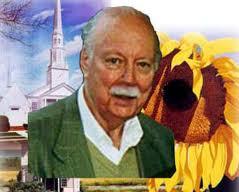Collection:
Harry Devlin Artist (1918-2001) Biography and Art Gallery Collection
Harry Devlin was an American Artist who, with subtle color and refined details, created artworks that are sure to be the centerpiece of any room. His beautiful paintings depict American architectural styles such as Greek Revival and Victorian and appear in the book "Portraits of American Architecture: Monuments to a Romantic Mood, 1830-1900." An artist and a painter, Harry Devlin also worked as a cartoonist for magazines such as Collier's. His work won him the National Cartoonist Society Advertising and Illustration Award for 1956, 1962, and 1963, their Illustration Award for 1977 and 1978, and their Magazine and Book Illustration Award for 1990. As a teen, he painted insignia on U.S. Army mail planes, which sparked his interest in building model planes. He studied fine arts at Syracuse and afterward began to illustrate for Collier's Weekly, where he became the lead editorial cartoonist. In 1956, Harry Devlin was elected president of the National Cartoonists Society and began a comic strip with his wife Wende, "Fullhouse," which was later renamed "Raggmopp", based on their family of nine.
Harry Devlin created beautiful paintings depicting American architectural styles such as Greek Revival and Victorian and appear in the book "Portraits of American Architecture: Monuments to a Romantic Mood, 1830-1900." Devlin proceeded to renew a long-standing interest in Victorian architecture where he published To Grandfather's House We Go (1967), containing illustrations after paintings he had begun as early as 1954. The clarity of the descriptions and illustrations of architecture made the work not only an educational children's book but also a source book for college courses in architectural history. Devlin published What Kind of a House Is That? shortly after, and in 1989 came his major volume on the subject, Portraits of American Architecture: Monuments to a Romantic Mood, 1830-1900. Devlin's style results from a technique very similar to contemporary photo-realism as is evident in ‘’Off the Yellow Brick Road’’ (1989). He alters slide images to define his basic composition, but incorporates "high truths" in the form of the removal of offending modern incursions such as telephone poles to infuse a sense of nostalgia and mood.
Today, the artwork of Harry Devlin can be found in several New Jersey private, corporate, and museum collections including the Jane Voorhees Zimmerli Art Museum and the Morris Museum of Art. Harry Devlin passed away in 2001 at the age of 83.


